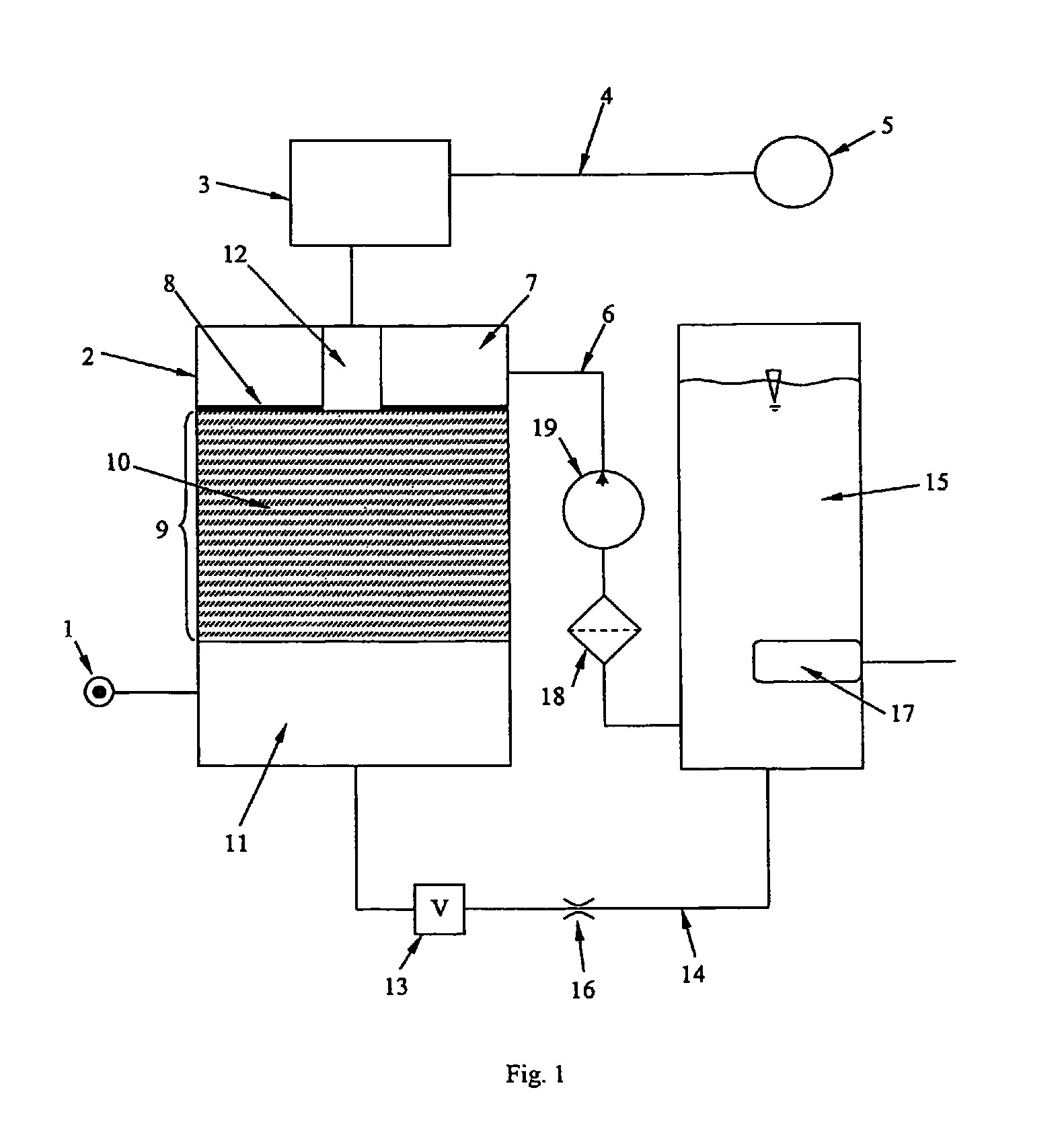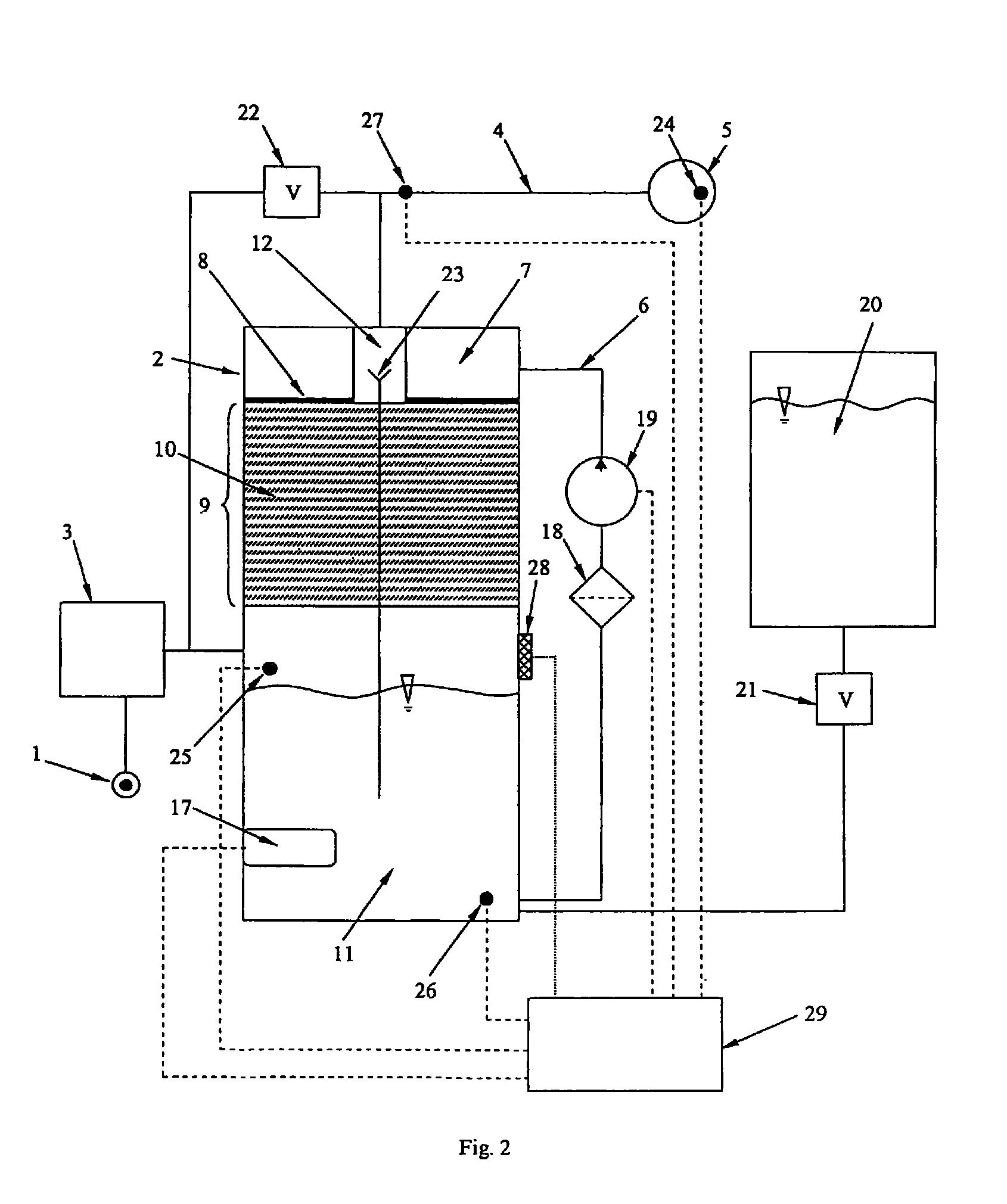Depending on the model of respiratory gas flow generator used and its control settings the instantaneous respiratory gas flow may vary widely during a single respiratory cycle which when using so far known ventilators may lead to serious problems.
During respiratory therapy, however, the significantly higher and often continuous gas flow with reference to normal breathing—especially when using cold and dry respiratory gas—often leads to adverse effects, i.e. irritation, inflammation, dryness and incrustation of the upper airways.
That task is quite difficult to perform especially under circumstances as described above where the instantaneous respiratory gas flow is widely varying as during spontaneous breathing or artificial ventilation.
The area of the water / gas interface is limited due to the limited space available in the practical respiratory setting.
In conjunction with the cooling of the surface water and its but slow replacement with warmer water (see above) resulting in a slow energy transfer to the water surface such a humidifier will deliver gas with a temperature highly dependent on gas flow, i.e. a varying gas-fluid temperature difference.
A theoretical but technically impractical solution would be a very fast water temperature control.
The most significant disadvantage of that design is that there arise similar problems as with the pass-over humidifier, since there is generated evaporation coldness which is not compensated for as fast as needed due to the rather slow energy transfer by the heated water rather slowly replacing the evaporated water, resulting in the inability to humidify or heat a highly variable gas flow impossible to constant values.
The life-time of most of the structured bodies on the market is limited, and most of them are not fully autoclavable which is disadvantageous with respect to medical applications.
The disadvantage of that design is the fibers' limited life-time and mechanical as well as thermal durability.
Moreover, the fibers' unsuitably high thermal resistance unduly restricts the heat transfer needed to compensate for evaporation coldness.
Thus especially with high gas flow the heating of the gas is insufficient, which in turn leads to insufficient gas humidification.
In case of a heavily varying gas flow, however, even forced heating of the fibers will not lead to constant humidification due to technical limitations of controlling the instantaneous fibre temperature as fast as required.
Main disadvantage of those devices is the high technical complexity needed which is paralleled by an increased technical risk especially with respect to high pressure and heat.
Another disadvantage is that for technical reasons the control of the evaporation lags behind the demands.
With heavily varying gas flow this will result in inconstant heating and humidification.
With those devices gas is bubbling through a heated fluid, resulting in heating and humidifying of the gas.
The main disadvantage of that design is its high gas flow resistance which numerically is at least the pressure difference resulting from the fluid surface to the level where the gas is entering the fluid.
Especially in spontaneously breathing patients a high gas flow resistance is disadvantageous.
Those devices use ultrasound to induce fluid vibrations resulting in the generation of tiny droplets which enter the gas flow.
Main disadvantage of that design is that the “humidification” doesn't result in molecular fluid within the gas but in substantially larger fluid particles (generation of an aerosol).
There is also the risk that—especially with intermittent or varying gas flow—the amount of humidity is too high or too low.
Those devices nebulize a fluid resulting in the formation of tiny droplets, not molecular fluid.
Thus those devices inherit the same disadvantages as ultrasound-type nebulizers (see above).
With heat and moisture exchangers (“artificial noses”) the gas is directed over a very large wet surface which results in saturation of the gas with humidity.
In all those devices it is of disadvantage that the evaporation coldness results in a gas flow dependent decrease in gas temperature.
Thus with varying gas flow it is impossible to provide constant gas temperature and humidity.
The amount of particles adhering to the filter will increase with time resulting in an increase in gas flow resistance which is highly undesirable in the medical setting.
By design, a heavily varying gas flow will result in inconstant gas temperature and humidity, since even the best control circuit is incapable to compensate for the evaporation coldness without significant time lag.
Of disadvantage are also the system's increased dead space (see above), its large dimension and weight, and other features not discussed here.
With this process it is of disadvantage that at first more energy in form of humidity and temperature is added to the gas than needed for ventilation.
This is not only unfavorable from an energetic point of view but there is also the risk that any malfunction of the cooling system will result in a substantial damage to the patient.
Those systems inherit a stack of rotating plates which during a part of each rotation dip into water thus becoming wet.
They lack any possibility to heat the gas to a preset value.
The practically limited mechanical dimension of those systems as well as their rotation frequency render them unsuitable for constant humidification of a varying gas flow, or to saturate it with humidity.
Thus to summarize, the state-of-the-art gas heating and humidifying systems are unsuitable for a satisfying controlled heating and humidification of a heavily varying or intermittent gas flow.
Another disadvantage of the known systems is that they impair—some of them to a very high degree—the precision of measurements and regulatory control loops highly desirable in respiratory therapy, or they hinder them totally.
Disadvantages of the already known humidifier devices placed between the respiratory gas flow generator and the patient are that they add an extra compressible volume—sometimes of extraordinary magnitude—to the respiratory circuit.
Another disadvantage of some of the already known humidifier devices is the positive pressure gradient between gas inlet and outlet.
In consequence there is the risk of malfunction and imprecise pressure control.
 Login to View More
Login to View More  Login to View More
Login to View More 


